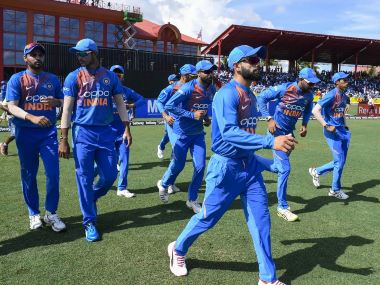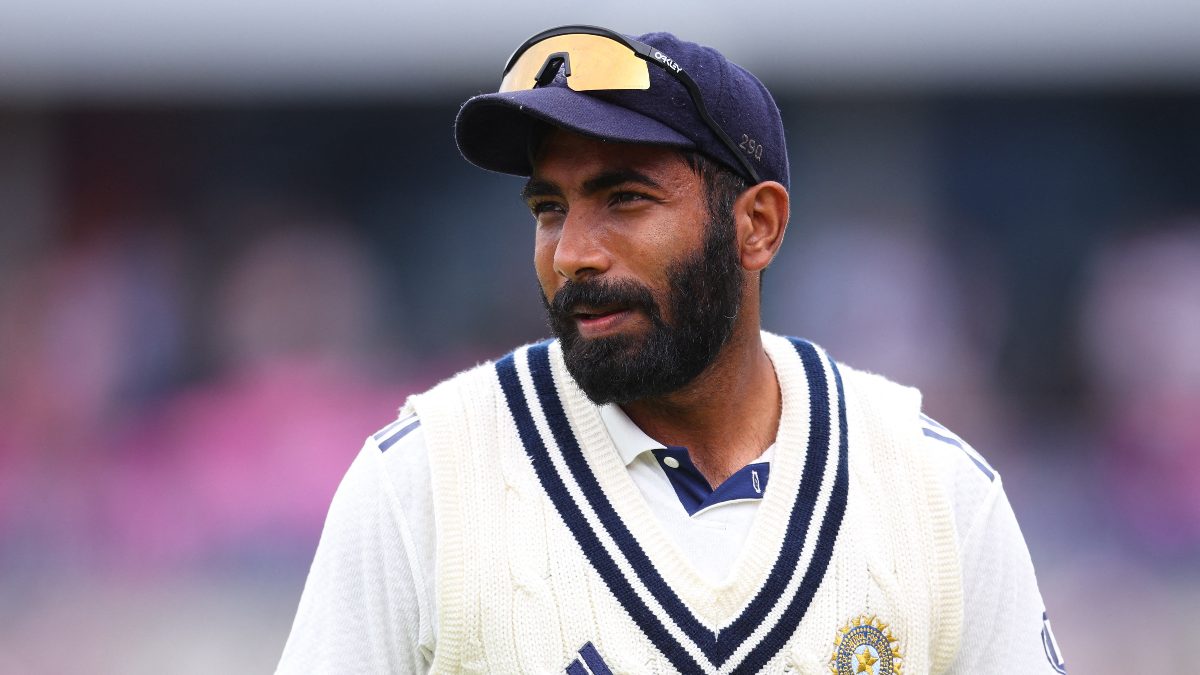In their last 18 T20Is ahead of their tour of USA and West Indies, India hadn’t once used a sixth bowler. In all but three of those games, they didn’t even have a sixth bowling option. Those three ‘aberrations’ all occurred during a three-match series in New Zealand in February; Rohit Sharma was leading the Indian team for the entire contest. It might have been purely coincidental, or even situational — India did, after all, have a bit of a second-string side, with Virat Kohli and Jasprit Bumrah rested, and Hardik Pandya and KL Rahul suspended — but the coincidence factor subsides a little when you consider the make-up of the Mumbai Indians setup in the years under Sharma’s captaincy. [caption id=“attachment_7106561” align=“alignleft” width=“380”]  India took 1-0 lead in three-match series with four-wicket win against West Indies in first T20I. AFP[/caption] Think of the common thread to the MI lineups over the last three seasons, two of which have seen them emerge as IPL champions — Sharma as captain and batting bulwark, Bumrah as bowling lynchpin, and a heavy presence of all-rounders; the Pandya brothers, along with either Kieron Pollard or Ben Cutting, making up the middle-order. What that has also meant is that Mumbai have, give or take a few exceptions, always entered matches with at least six bowling options. As India kicked off their month-long tour of the Americas, which set them on the road to the next big-ticket event on the cricket calendar — the 2020 T20 World Cup in Australia — the team picked for the opening contest of their three T20I rubbers at Lauderhill showed signs of a shifting mindset. Krunal Pandya, Ravindra Jadeja and Washington Sundar constituted numbers six, seven and eight in the Indian XI. How many times have you seen India line up with three different genuine all-round options in any format? The answer, at least if you’re considering only the shortest format, is all of eight times in 24 T20Is since the start of 2018 — all of which came when Kohli was resting, and Sharma was in-charge of the outfit (the three aforementioned matches in New Zealand, and five games during the Nidahas Trophy in Sri Lanka in March 2018). For all the talk of ‘horses-for-courses’ under the Virat Kohli-Ravi Shastri regime presiding over Indian cricket, Indian limited overs teams of recent years have been visibly different to global patterns when it comes to the presence of all-rounders, or back-up bowling options. In T20 cricket, in particular, the absence of someone else to go to on the park has been a common falling in India’s eight defeats in 24 games since 2018; think Krunal bowling out his four overs for 54 runs in the deciding clash on the tour of New Zealand despite the presence of Vijay Shankar in the lineup, or Shankar himself then going on to bowl the entire quota of four overs when Glenn Maxwell tore through India in the deciding rubber when Australia came visiting weeks later since India didn’t have a sixth bowler to go with. A single game, of course, is too narrow a ball-park for consideration, or even for a signal of complete intent, but the start to the restructured ideology, used for the first time at Lauderhill, was nothing short of promising — and, perhaps more vitally, course-correcting. Sundar, Pandya and Jadeja bowled the half the Indian overs in the opener against the Windies, giving away 51 runs while scalping the wickets of Joel Campbell, Carlos Brathwaite and Sunil Narine, respectively; in the second half of the day, as India limped to the ordinary target of 96, the trio was responsible for 30 of the team’s runs — scored off 28 balls, a strike rate well above the average scoring rate for the contest. Yes, this is all only just the one game, but look around the world of T20 cricket, and successful, title-winning squads, more often than not, are made up of bits-and-pieces cricketers (no thanks, Sanjay Manjrekar). Each T20 World Cup champion from the six editions of the competition so far has taken to the field in the summit clash with at least six bowling options — that number, in fact, reads eight for West Indies in 2016 and nine in 2012, and seven each for England in 2010 and Pakistan in 2009. The same holds true for four of the six winners of the Women’s T20 World Cup so far; it also holds true for the winners of the last edition of the IPL, Big Bash, T20 Blast, Mzansi Super League, Caribbean Premier League, Bangladesh Premier League and Pakistan Super League. All-rounders and T20 cricket aren’t just a ‘trend’ — they are a hand-in-glove requisite, a failsafe truism. You might not necessarily need more than five bowlers on each occasion, but there cannot be a T20 captain across the now-sizeable history of the crash-and-bang format who has regretted having the choice of a sixth bowler up his sleeve. You might not necessarily need the meatiness of batting depth going into the six or seven-downs, but think of every occasion where the top- and middle-order has crumbled and you thought just what if the team in question had gone with the ‘bits-and-pieces’ alternative available to them but warming the bench. It’s just that it hasn’t been a way of life for the Indian T20 setup, all-the-more so in the last 30 months since Kohli became captain across formats. It ties down with what has been a criticism of the Indian captain through the failings of his Royal Challengers Bangalore side in the last three IPL campaigns — 2019 was the first sign of Kohli finally budging on his unsuccessful attempts of the two previous seasons, when he just wouldn’t look beyond five bowlers regardless of conditions/scorecards, and in this last season too he could have been held guilty of grossly under-utilizing the sixth/seventh bowling options available to him in his XIs (Moeen Ali for the first half of the campaign, Colin de Grandhomme all through, plus the likes of Shivam Dube and Washington Sundar). In India’s first match since the heartbreak of 2019 World Cup exit, which they entered amid all the nonsensical chatter of the TV studios-induced ‘rift’ between the captain and vice-captain, Kohli showed he may just have taken a leaf out of his more-decorated teammate’s book (at least in terms of T20 stewardship). Coming as it does with India embarking on the road to the 2020 T20 World Cup — which, lest you forget, is all of 14 months away — it might be just what the doctor ordered (no pun intended, coach Shastri).
Under the Virat Kohli-Ravi Shastri regime, India’s limited overs teams of recent years have been visibly different to global patterns when it comes to the presence of all-rounders, or back-up bowling options. In the first T20I against West Indies, there was a change.
Advertisement
End of Article


)

)
)
)
)
)
)
)
)



